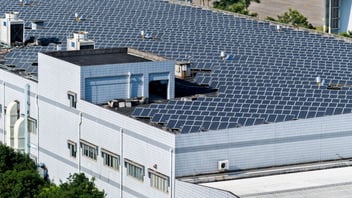A Critical Look at Today’s Sustainability Efforts During Climate Week NYC

Climate Week NYC is underway. As the world’s largest climate event invites experts to gather in America’s economic and cultural center to navigate the planet’s most pressing challenges, it’s an appropriate time to consider how serious we’re being in our approach to urgent climate issues. Are we choosing style over substance? In New York and beyond, are we making decisions that actually lead to a sustainable future?
At best, the answers to those questions are complicated. It’s hard to ignore the show of support that electric vehicles have enjoyed in recent months. Passed in mid-August, the Inflation Reduction Act restructured the tax credits available for electric vehicle buyers. President Joe Biden recently made an appearance at an EV-centric auto show during a trip to Detroit, snagging photos while seated inside all kinds of new electric vehicles and announcing the approval of $900 million dedicated to installing EV charging stations across the country.
Policy and publicity are working in tandem to position electric vehicles as the must-have item for life in a sustainable world. Meanwhile, relatively few headlines have focused on the complications inherent with a boom in EV popularity—most notably, the path to increased production is looking pretty unsteady.
A rechargeable battery is core to an electric vehicle’s functionality. The world’s dominant supply of lithium-ion batteries for EVs comes from China; the country has established itself as a superpower for mining, processing, and refining lithium. A skyrocketing need for EV batteries runs the risk of increasing America’s energy dependence on a nation that presents a tense and sensitive commerce relationship. At the same time, there’s currently just one active lithium mine in America. Another complicating factor: To qualify for the Inflation Reduction Act’s new tax credits, EVs must use batteries with a specified amount of materials sourced from North America (or U.S. trade partners) as early as 2024. It all contributes to a hazy and uncertain outlook for the widespread transition to EVs, offering more questions than answers.
Remember when we all thought buying a reusable shopping bag was our best shot at a more sustainable life? That’s how we were going to save the earth! Then we found out it was a bit more complicated than that. It might take hundreds of uses for a reusable bag to negate the environmental footprint of single-use plastic bags.
We weren’t necessarily wrong. Committed attempts can still be worthwhile; New York and several other states have banned plastic bags. Our intentions were good, and sure, it keeps litter off the streets. But changing the way we carry our groceries was never going to solve all of our problems. Maybe we missed some other opportunities by putting our eggs in one basket… or one reusable shopping bag… too early.
Now we have to ask: Are we making the same mistake again on a much larger scale? We can’t hang our hopes on EVs as the only change necessary to create a greener world. Idealizing electric vehicles as the central solution to our shortcomings on sustainability isn’t just incorrect—It’ll require us to face a long list of issues that involve navigating geopolitical tensions, opening mines in Canada and North Carolina, and addressing plenty of other challenges that are far more complex than choosing materials for shopping bags. With all of this collective energy focused in one direction, there are other possibilities for progress passing right by us.
New York state has made many gestures and policy declarations in the past. You can read more about one such instance here. But until we create a special incentive for consumer and industrial solar -- many of our conversations around the topic are unrealistic and are not going to bring the real industry change that is needed.
It’s not a hypothetical scenario. There are major elements of the climate crisis that aren’t being dealt with as effectively as possible. More than 30 percent of the United States’ greenhouse gas emissions come from energy use by commercial and residential buildings, and the most effective way to solve this problem is currently underutilized.
Commercial and industrial rooftop solar presents an undeniably effective solution, striking at the heart of the issue in several key ways:
- It doesn’t require the mass construction of new “green” buildings. In itself, that’s a victory for sustainability. Construction projects carry a significant environmental footprint.
- It avoids unnecessary disturbances to undeveloped areas—Frankly, it’s absurd that we’re rushing to fill so many of our farmlands and natural spaces with solar panels when nearly 40 percent of America’s energy needs could be met by rooftop solar.
- It establishes distributed energy sources all across the country, alleviating pressure on America’s aging energy grid. With extreme weather patterns and threats of widespread outages becoming more common, this has never been more important.
- It brings a solution to the built environment we already have, directly reducing the staggering amount of greenhouse gases generated by commercial buildings.
Industrial solar installations usually aren’t the topic of high-profile panel discussions or glowing editorials. They don’t present the same flashy photo opportunities as electric vehicles, they’ve typically received less public attention than residential solar developments, and their location puts them (literally) out of sight and out of mind. But they deliver results at a transformative magnitude and should absolutely be supported by a full slate of strategies that encourage wider use. New and enhanced incentives should be considered at all levels of government in order to make commercial rooftop solar an even easier financial choice. Complex regulations with difficult reporting and enforcement structures, like New York’s Local Law 97, should be supported or replaced by more practical expectations for rooftop solar adoption. And our leaders should speak forcefully about the opportunity that exists right in front of us to take action against the climate crisis in an effective, accessible way.
Let us be abundantly clear: We’re not arguing for the wholesale abandonment of electric vehicles or a total disregard for existing regulatory tactics. We are emphatically making the case for an approach that prioritizes problem solving over PR darlings. We’re asking you (along with legislators, industry leaders, members of the media, and so many more) to imagine where we can go if we’re willing to contribute the same level of effort and enthusiasm toward solutions that can address our most dire global issues without presenting an endless list of dead ends and complicating factors.
There’s simply no time left for missed opportunities. Let’s put our resources to work maximizing approaches that are proven to make a serious impact in the fight against climate change.

.jpg?width=352&name=Untitled%20design%20(1).jpg)
%20(4).jpg?width=352&name=Untitled%20(1920%20x%201080%20px)%20(4).jpg)
